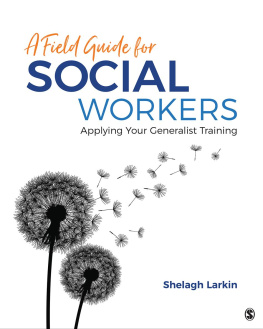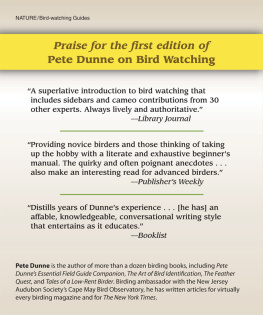THE SOCIAL
WORKERS GUIDE
TO THE CARE ACT 2014
Other books you may be interested in:
Personal Safety for Social Workers and Health Professionals
By Brian Atkins ISBN 978-1-909330-33-7
Positive Social Work: The Essential Toolkit for NQSWs, 2nd ed
By Julie Adams and Angie Sheard ISBN 978-1-911106-76-0
Practice Education in Social Work: Achieving Professional Standards, 2nd ed
By Pam Field, Cathie Jasper and Lesley Littler ISBN 978-1-911106-10-4
Titles are also available in a range of electronic formats. To order please go to our website www.criticalpublishing.com or contact our distributor NBN International, 10 Thornbury Road, Plymouth PL6 7PP, telephone 01752 202301 or email orders@nbninternational.com
THE SOCIAL
WORKERS GUIDE
TO THE CARE ACT 2014
Pete Feldon
First published in 2017 by Critical Publishing Ltd
All rights reserved. No part of this publication may be reproduced, stored in a retrieval system, or transmitted in any form or by any means, electronic, mechanical, photocopying, recording or otherwise, without prior permission in writing from the publisher.
Copyright 2017 Pete Feldon
British Library Cataloguing in Publication Data
A CIP record for this book is available from the British Library
ISBN: 978-1-911106-68-5
This book is also available in the following e-book formats:
MOBI ISBN: 978-1-911106-69-2
EPUB ISBN: 978-1-911106-70-8
Adobe e-book ISBN: 978-1-911106-71-5
The rights of Pete Feldon be identified as the Author of this work have been asserted by him in accordance with the Copyright, Design and Patents Act 1988.
Cover design by Out of House
Text design by Greensplash Limited
Project Management by Out of House Publishing
Printed and bound in Great Britain by TJ International, Padstow, Cornwall
Critical Publishing
3 Connaught Road
St Albans AL3 5RX
www.criticalpublishing.com
Contents
Pete Feldon is a freelance Care Act consultant and trainer. He has a background of working in many sectors of social care as a social worker, trainer, manager and policy developer. He was a member of the team that developed learning materials for the Care Act for Skills for Care. He currently provides Care Act training for local authorities and for BASW. He was previously a member of the board of Skills for Care (November 2012November 2014). He has written articles on the Care Act published in Professional Social Work, and also The A-Z of the Care Act 2014 for Community Care Inform.
I am very grateful for the help from social work colleagues whom I have met through my involvement with BASW (British Association of Social Workers). Peter Simcock, Geraldine Nosowska and Leire Agirre looked at the first few chapters that I wrote and helped me both with the detail and the overall shape. Particular thanks go to Pete Morgan, Chair of the Board of PASAUK (Practitioner Alliance for Safeguarding Adults), who worked with me on several versions of the safeguarding chapter. Thanks also to Helen Mitchell and Leire Agirre for their comments on the safeguarding chapter.
A key feature of the book is using case examples to explore the practical application of the Care Act. Thanks to Pete Morgan for providing me with outlines for the safeguarding cases, and to Jane Shears for her help with a mental health case example.
On matters of detail, my major concerns have been to ensure that the case examples are authentic and that what is written about the law is accurate, and while I have taken into account the suggestions of colleagues, the responsibility for any lack of authenticity or inaccuracy is mine.
The idea for this book derives from the submission made by BASW (British Association of Social Workers) on the draft of the Care and Support Statutory Guidance (published in June 2014), which proposed that the guide would be improved through a specific section bringing together references to the role of the social worker. This didnt happen and in early 2016 with nothing of this nature in sight, I decided that I would write this book.
Since the Care Act was passed in April 2014 I have been involved in developing materials to assist people in their learning, and I have delivered training to social workers and other practitioners. I worked with IPC (Institute of Public Care) to produce the suite of learning materials for Skills for Care, and since then I have been providing training for local authorities and BASW. Through both of these sets of experiences I have been able to refine my ideas about what social workers want to know about the Care Act 2014 and the associated Regulations and the Care and Support Statutory Guidance.
My approach is intended to contribute to improving the legal literacy of social workers, ie the ability to connect relevant legal rules with professional priorities and objectives of ethical practice*. The book aims to enable social workers to better understand the legal framework within which they make professional judgements and apply their expertise. Law requires interpretation when applied in complex situations, and while the statutory guidance provides some help with this by describing what social workers must take into consideration, when it comes to getting things right for adults with care and support needs and carers, it is social workers who must take the lead in balancing legal requirements with good social work practice in the context of the resources available from the local authorities that they work within.
* Legal Literacy in Adult Social Care Research in Practice for Adults (2016)
The implementation of the Care Act 2014 in April 2015 swept aside a patchwork of legislation that had developed over more than 50 years since the modern welfare state was established by the National Assistance Act 1948. The legislative framework of the Care Act 2014, the associated Regulations and the Care and Support Statutory Guidance, provides a revised mandate for social work with adults and a policy framework that embraces and supports the development of modern social care.
The Care Act provides the legislative mandate for the core social work tasks of assessment of needs, care and support planning and safeguarding. The accompanying Care and Support Statutory Guidance (revised 2017) is written for a generic audience and it is not always set out in a way that is coherent from a social work perspective. The intention of this book is to present the information from the Act, regulations and statutory guidance in a way that provides social workers with a good understanding of the legislation and how it applies to their role. In addition it highlights the circumstances where professional judgement is required and explores issues that need some interpretation through the use of case examples.
There are parts of the operational framework provided by the statutory guidance that require further interpretation before social workers can be confident about their application. Local authorities provide this to some extent by developing their own policies and procedures, and indeed they are required to do so in the key area of safeguarding. This book hopes to highlight and address those areas where there is a lack of clarity and detail by setting out the existing content in ways that focus on the role of the social worker, and additional detail is provided through the use of case examples to suggest interpretations that derive from practice. Although this book aims to be clear about what the law says, any interpretations that are suggested are in relation to social work practice and not on points of law.












